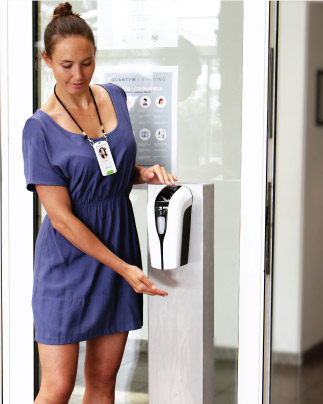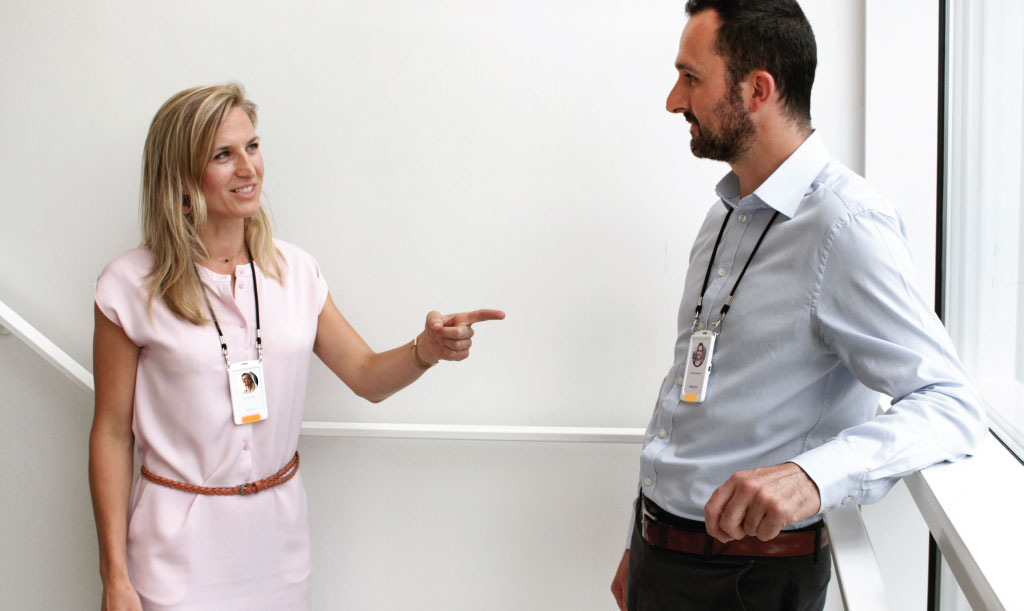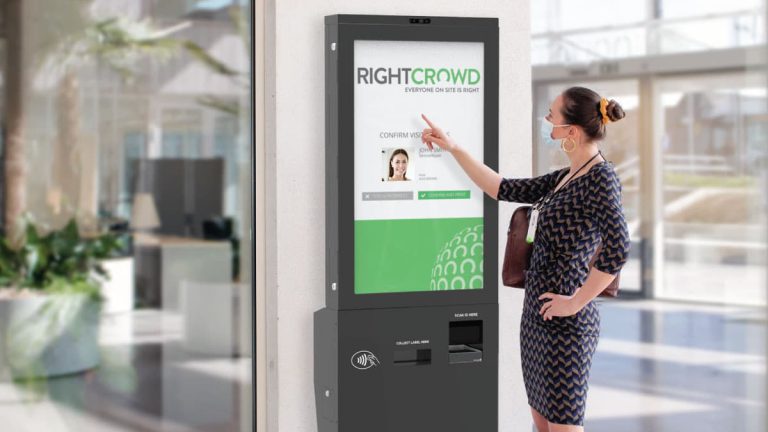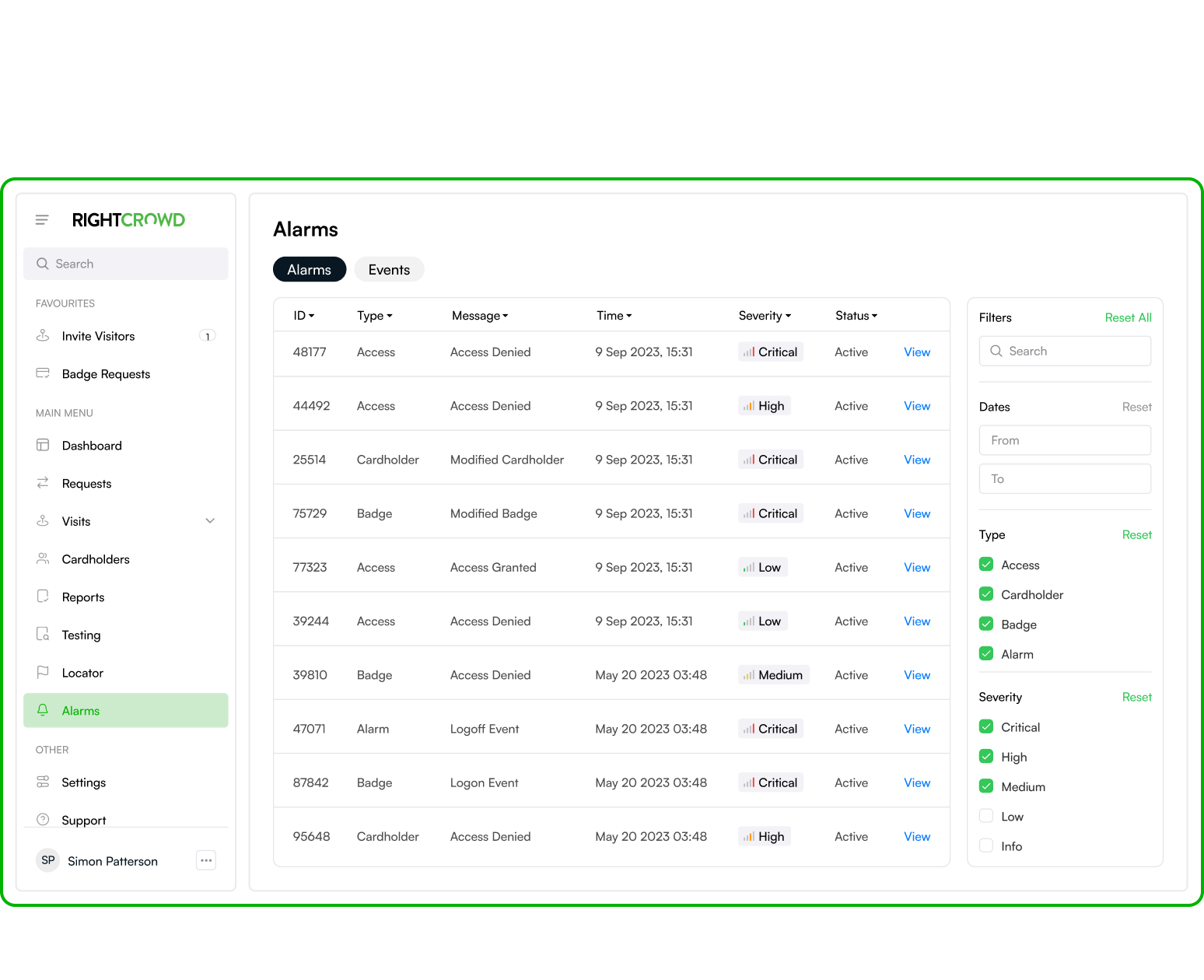The United States CDC recommends that limiting close face-to-face contact with others is the best way to reduce the spread of COVID-19. In this post we’ll look at social distancing at work and some of the measures and technologies that can be used to make it easy.
What is social distancing at work?
Social distancing, also called ”physical distancing,” means keeping a safe space between yourself and other people at work.
To practice social or physical distancing, workers need to stay at least 6 feet (2 metres) from other people in both indoor and outdoor spaces, and in crowded spaces or work groups.
Social distancing should be practiced in combination with other everyday preventive actions known to reduce the spread of COVID-19. These include wearing masks, avoiding touching your face with unwashed hands, and washing your hands with soap and water for at least 20 seconds.
Why practice social distancing at work?
COVID-19 can spread among people who are in close contact for prolonged periods. Work for many people entails collaboration or physical interactions where they come in close contact. Whether it’s working in a manufacturing plant or collaborating on a banking proposal, working together now carries the risk of being infected with COVID-19.
The virus spreads at work when an infected person coughs, sneezes, or talks, and droplets from their mouth or nose are launched into the air and land in the mouths or noses of people working nearby. Social distancing at work helps limit the risk of virus transmission from one worker to another.
Since people can spread the virus before they know they are sick, it is important to stay at least 6 feet away from others at work, even though they may not display any symptoms.

Social distancing has been shown to be among the most important measures to control the spread of the virus. The practice has been shown to be effective socially and at work.
Tips for Social Distancing at Work
When going to work, it is important to stay at least 6 feet away from your co-workers, vendors, contractors and visitors, and wear a mask to slow the spread of COVID-19. Consider the following tips for practicing social distancing when you go to work.
If you’re sick get a test and stay home: If you are sick with COVID-19, have symptoms consistent with COVID-19, or have been in close contact with someone who has COVID-19, it is important to get a test and stay home away from other people until it is safe to go back to work.
Know Before You Go: Before going to work, know and follow the guidance from local public health authorities where you work.
Prepare for Public Transportation: Consider social distancing options to travel safely to and from work. When using public transit, try to keep at least 6 feet from other passengers or transit operators — for example, when you are waiting at a bus station or selecting seats on a bus or train. When using rideshares or taxis, avoid pooled rides where multiple passengers are picked up, and sit in the back seat in larger vehicles so you can remain at least 6 feet away from the driver.
Limit Contact: Only visit people in person when you absolutely need to, and stay at least 6 feet away from others when you do. Maintain physical distancing between yourself and others during exchanges and wear a mask.
Social Distancing System: A social distancing system using wearable devices can visually warn workers when they get within 6 feet of each other for too long. Typically they rely on Bluetooth Low Energy (BLE) or Ultra Wideband (UWB) communications that allow the devices to monitor the distance and duration of proximity of the other devices present. In this way, if your device can detect someone else’s device for long enough, you’re considered too close to the other person and can potentially become infected or infect them. These devices play an important role in changing workplace behavior that many other solutions simply cannot.
Shielding: In some work environments it’s very difficult to consistently maintain distancing of 6 feet. Physical transparent shields can either be installed between people or be worn on workers’ faces, such as those commonly used in hi-tech manufacturing.
Keep Distance at Meetings: If you are in a crowded space, try to keep 6 feet of space between yourself and others and wear a mask. Pay attention to any physical guides, such as tape markings on floors, signs on walls or room limits.
Limit Use of Shared Spaces: Limiting contact with commonly used surfaces or areas in kitchens, bathrooms and common areas can help to reduce the spread of the virus. Many organizations have increased the frequency of cleaning in kitchen areas and bathrooms, and limited the use of common areas.
Clean hands often: Wash your hands for at least 20 seconds frequently throughout the day. If soap and water are not readily available, use a hand sanitizer that contains at least 60% alcohol. Cover all surfaces of your hands and rub them together until they feel dry.

Although the risk of severe illness may be different for everyone, anyone can get and spread COVID-19. Everyone has a role to play in slowing the spread and protecting themselves, their family, and their community. In addition to practicing everyday steps to prevent COVID-19, following these types of practices can help us all avoid being exposed to this virus and slowing its spread in our workplaces.




